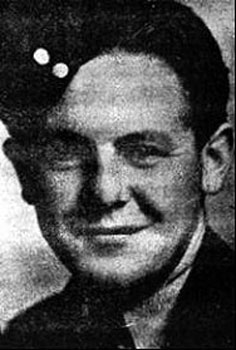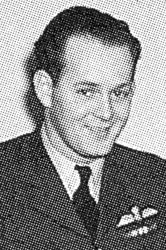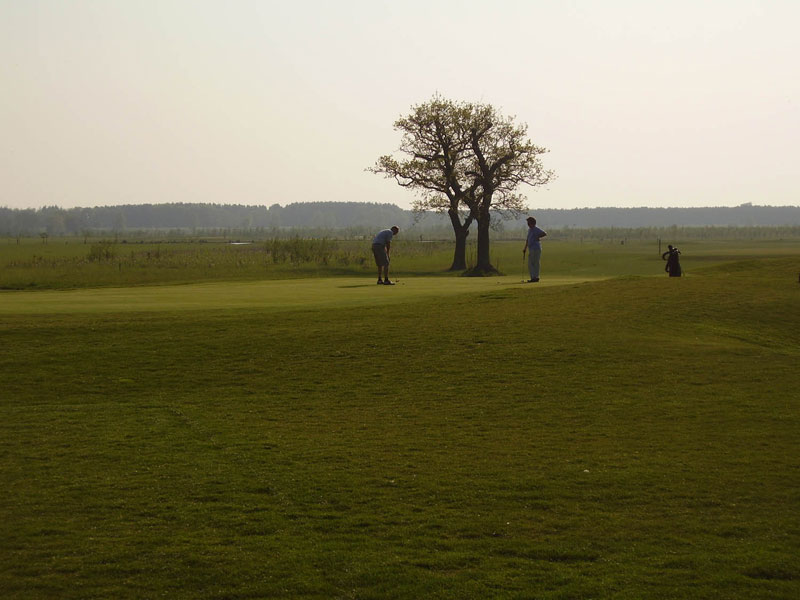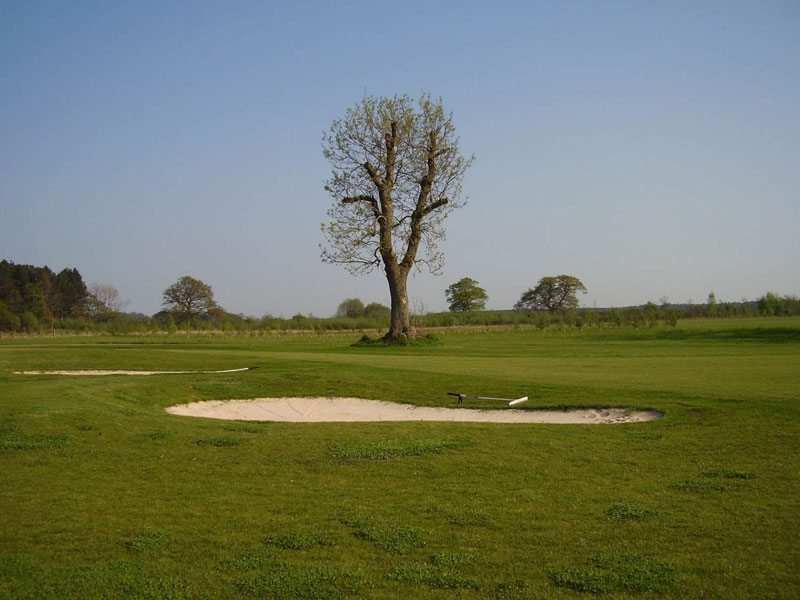Halifax JN953 near Claxton Hall.
On 12th June 1944 the crew of this 428 Squadron Halifax were undertaking a bombing exercise (probably over the Strensall Ranges) when the port outer engine failed while flying at 5000 feet, the pilot ordered his crew to bale out and he stayed with the aircraft to set about making a forced landing. This was done at 00.35hrs, three hours fifteen minutes into the flight to the west of Claxton Hall, north east of York. On crashing the aircraft caught fire and the pilot had to be pulled from the wreckage suffering from shock, burns, broken back and ankle. He was taken to York Military Hospital where it is thought he recovered to some extent. One propeller blade from the offending engine was found to be missing at the time of the crash, this may or may not have been the
reason for the engine failing in the first place. The rest of the crew were taken to East Moor airfield where it is believed that the bomb aimer was treated for slight injuries following a heavy landing. This aircraft was the last Halifax MkII to be lost by a front line squadron in the War. This crew had only just arrived at 428 Squadron having completed their course at 1666 H.C.U. at
Wombleton on 7th June 1944. With their pilot in hospital recovering from his injuries his crew were pilotless, some were posted to other units and begun operational flying. The crash site is now part of a golf course managed by Sandburn Hall and a memorial picture is housed the club-house.
Halifax JN953 was built to contract B124357/40 by The London Passenger Transport Board Ltd at Leavesden and was delivered directly to 419 Squadron at Middleton St.George in late September 1943. On 21st / 22nd January 1944 it was attacked by an un-identified twin engined aircraft on Ops to Magdeburg. Its crew were able to return safely to base and after inspection some eighty holes were found in the aircraft. It later transferred to 428 Squadron also at Middleton St.George in early 1944 and was written off as a result of this incident detailed above with Cat.E2/FA Burnt damage being recorded on the paperwork.
Pilot - F/O James Martin RCAF (J/28715). Seriously injured.
Navigator - F/O A W Savage RCAF (J/28963).
Bomb Aimer - F/O N M Blakely RCAF (J/28940). Slightly injured.
Wireless Operator / Air Gunner - WO1 J A P Bourdage(s) RCAF (R/55896).
Air Gunner - Sgt John Neil MacDougall RCAF (R/137591).
Air Gunner - Sgt R D Morgan RCAF (R/258028).
Flight Engineer - Sgt J A Crane RCAF (R/117206).
John MacDougall was posted back to 1666 H.C.U. shortly after this incident at Claxton and remained there until 5th November 1944 when he was posted to 426 Squadron. He was sadly killed on 5th March 1945 when Halifax LW210 crashed in the centre of York with the loss of all but the wireless operator. John MacDougall was twenty two years old and is buried at Harrogate Stonefall Cemetery. He received a back dated commission after his death.
James Martin sustained pretty serious injuries as a result of the crash. He suffered extensive burns to his righ hand, left leg and left side of his head. He also fractured four bones in his back. He was initially treated for his injuries at York Military Hospital but then transferred to the RAF Hospital at Northallerton in July. Later that month he was transferred to the Basingstoke Neurological and Plastic Surgery Hospital before being admitted to East Grinstead Hospital on 22nd August 1944. He was treated there for the burn injuries and became one of the famous Guinea Pig patients. He died in April 1999. The photo shown above was found on "www.eastgrinsteadmuseum.org.uk".
Local recollections passed to me by Mr Mick Leeming state that a Halifax clipped these two trees in the centre of this photograph and would then crash where the sixteenth green of Sandburn Hall Golf Course would later be created. My thanks to Mr Mick Leeming for his input into the ongoing research on this incident and for fixing up my visit in May 2008, and to Mr James Hogg for allowing my visit. The golf club and this crash site are on private land.



Little else is known about any of this crew. F/O Savage was posted to 434 Squadron and flew operationally in Lancaster KB895. KB895 was later flown back to Canada by him and his crew and
was used in the production of the Mynarski Lancaster in Canada.

